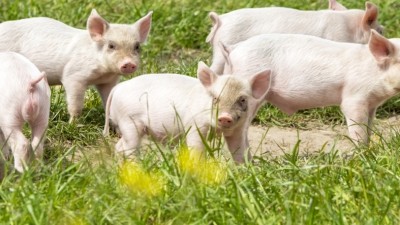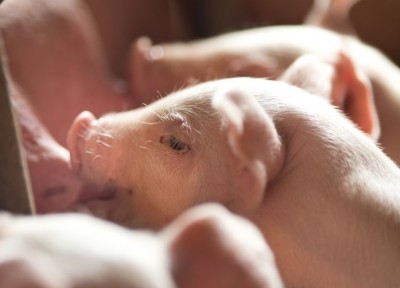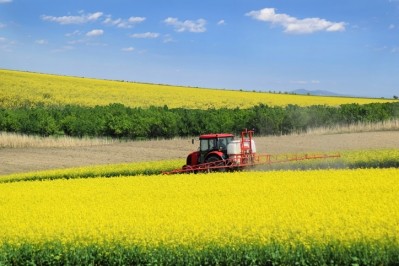Reports from EuroTier 2018
What production trends are driving swine feed innovation at Agrifirm?
We spoke to Harry de Groot, commercial director pigs, at Agrifirm, at EuroTier to hear how that group is approaching piglet feeding, and gut health at later stages.
“Our focus is on quality, and higher profits for farmers."
Recent additions to the Agrifirm swine portfolio include UniQ, developed in conjunction with its subsidiary, Nuscience. The concept, he said, is a total approach for pig farmers and feed manufacturers to help them achieve the target of ‘zero’ antibiotics and zinc oxide. It was launched in spring this year.
There is an increasing need to focus on piglet quality as sows are farrowing more piglets arising out of genetic developments, and the reduction of antibiotic use is currently a high priority, he said.
UniQ, said the company, is a combination of feed lines with a focus on uniform raw material use and taste recognition for piglets in a bid to contribute to a smooth transition and better performance. Also included in that program is piglet scanning, advice and performance monitoring. The on-farm adviser can use the scanning tool to give immediate insight into piglet quality on the farm. The adviser uses this information to produce an action plan, together with the pig farmer, with the aim of increasing piglet quality and, in turn, the farmer’s returns, said Agrifirm.
Fiber range
Agrifirm also brought out its Fiber for Pigs range recently, said de Groot. It consists of fiber-rich products, and is based on the knowledge the group had accrued over the years in relation to fibers and structure in the field of gastrointestinal health in pigs.
The range is designed to support intestinal health, boost feed intake, contribute to higher growth due to better feed intake, and it results in dryer pens, thus creating an improved rearing environment, said the group.
The company maintains that fibers contribute to a slower gastric passage, which ensures better utilization of the feed and less undigested protein in the large intestine. The drier manure of the pig shows that fibers support stomach and intestinal health, it added.
Fiber research
The use of high-fiber feed ingredients in swine diets is on the rise due to their wide availability and relatively low cost. However, because pigs lack enzymes needed to digest dietary fiber, the energy available to pigs from these ingredients is less than lower-fiber ingredients, say researchers at the University of Illinois, who worked on a study with Agrifirm based experts that aimed at determining the contribution that high-fiber feed ingredients make to the energy content of swine diets.
Hans Stein, professor in the Department of Animal Sciences at the University of Illinois hypothesized that different inclusion rates of high-fiber ingredients in diets fed to pigs might result in different values for digestible and metabolizable energy.
"Energy is obtained from dietary fiber via hindgut fermentation, and there may be a saturation point in the fermentation capacity in the hindgut of growing pigs," he said. "Increasing dietary fiber also makes feed move through the digestive tract more quickly, so there's less time for it to ferment."
Stein and fellow researchers, Diego Navarro of the University of Illinois and Erik Bruininx and Lineke de Jong of Agrifirm Innovation Center, tested ten diets fed to growing pigs. The diets were formulated by adding either 15 or 30% canola meal, corn germ meal, sugar beet pulp, or wheat middlings to a basal diet consisting of corn, soybean meal, and cornstarch.
As expected, apparent ileal and total tract digestibility of gross energy and the concentration of digestible and metabolizable energy decreased as the inclusion of high-fiber ingredients in the diets increased.
The amount of time it took digesta to pass through the ileum didn't differ among pigs fed the different diets. However, the amount of time it took digesta to pass through the total tract decreased with increased inclusion of any of the high-fiber ingredients. However, the apparent hindgut disappearance of energy increased with increasing inclusion of high-fiber ingredients, indicating that the proportion of energy derived from hindgut fermentation is greater when diets contain more fiber.
The inclusion rate of any of the high-fiber ingredients did not affect the digestibility of energy or the concentration of digestible and metabolizable energy derived from the nutrients themselves. In other words, each ingredient was digested as efficiently when it was included at 30% as it was when it was included at 15%
"Based on these results, we can say that the ability of pigs to ferment fiber in the hindgut is not affected by inclusion of high fiber ingredients up to 30%," said Stein. "The decrease in energy utilization when high fiber ingredients are fed is mostly likely due to reduction in digestibility of other nutrients due to faster passage through the digestive tract."
Source: Journal of Animal Science
Title: The contribution of digestible and metabolizable energy from high-fiber dietary ingredients is not affected by inclusion rate in mixed diets fed to growing pigs.
Authors: Stein et al















